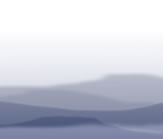THEMES IN THIS
TESTIMONY
Agriculture

Education

Gender

Health

Identity

Justice and crime

Click on arrows
to find more
testimonies
featuring
these themes
|
Bhakhat Bahadur |
(NEPAL 1) |
|
Sex
|
male
|
|
|
Age
|
58
|
|
|
Identity
|
Hindu, Chettri caste
|
|
|
Occupation
|
farmer
|
|
|
Location
|
Thakani VDC, Sindhupalchok
|
|
|
Date
|
1994
|
|
summary
The central theme of this interview is comparisons between the past and the present. The narrator talks a lot about the changes that have occurred, which he finds rather “astonishing” – “thinking about the present and the past is really strange”. The narrator notes that people are better educated now and he seems to suggest life expectancy is better these days, yet he also comments that things were much better in the past, and repeatedly states that he preferred that time. He talks about the greater gender difference in wages today, with men getting almost twice what women receive. He finds that the previous system was “better than today’s. It was equal then”. Similarly, he discusses how he preferred the last political regime (Rana) to the present one, as the criminal justice system is now too liberal and money can now buy legal victory. He says that, “between the present day and the old days, people say the old one is the better one. We like the old regime”.
Towards the end of the interview there is some interesting detail on the spatial organisation of the village according to caste and a description of different types of share cropping arrangements determined by land quality.
detailed breakdown
|
You will need a password from Panos to view the full
transcript of the interview. To apply for a password, click here.
Once you have a password, click here to go to the beginning
of the transcript. You can also click on any section of the
breakdown of content below and go straight to the
corresponding part of the transcript.
|
| Section 1-2 |
Origins of his family.
Reference to short life spans in his family. Generational difference: he has no formal education while one of his sons was fully educated and is now a teacher. Two sons are “in the countryside” (became agricultural labourers?). “The third youngest son also got education but due to the shortage of manpower in the field, he began to work in ploughing ox and digging... We cannot feed without working”.
|
| Section 3-4 |
Details of marketable surplus produced (rice, millet and maize). Description of how income is spent - on fertiliser, hired manual labour and clothes - there is nothing to spare. Agricultural details, including fertiliser use and its benefits: “We use it because of profit. Or the crops are doubled. If it grows 20 muri instead of 10, it should be called improvement.”
Doesn’t see differences between daughters-in-law now and in the past.
Detailed but confusing description of his uncle’s job.
|
| Section 5 |
Important discussion of men’s and women’s wages, of women’s work in the fields and how they receive less money: “Now men get double”. Suggests that in the past women were paid the same as men. Harder to find workers today: “In those days we could get people but not now.”
|
| Section 6 |
Explains how fertiliser has made life easier for all and decreased poverty – this is why it is difficult to find hired labour. He has no real criticisms of it.
There has been a vast increase in the cost of marriage.
|
| Section 7 |
Complains bitterly about rising cost of living: “five or seven thousands. The cow worth 30 rupees costs five or seven thousands.” Detailed description of how he built his own house with communal labour which no longer exists today: “In the old days I heard that there would be community work, people would work in group. We have not seen such things today.”
|
| Section 8-10 |
Comments that the criminal justice system is now too liberal, believing that: “It is not a sin to kill killers or murderers.” Money can now buy legal victory (eg in a land dispute).
Castes live in different parts of the village and land prices subsequently differ. Share-cropping arrangements vary between areas and land types.
Health provision: use of local medical centre; explains the ill who cannot be cured in the village with medicine either have to walk or be carried to the city for treatment.
|
|


